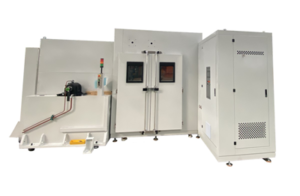Smithers develops study on low-temperature tire rolling resistance
Akron, OH – Smithers announces the release of a new whitepaper reporting the effects of temperature on tire rolling resistance.
Tire rolling resistance is closely related to overall vehicle fuel economy or range in both ICE and electric vehicles (EVs). Currently, it is understood that rolling resistance reduction is a reliable strategy for optimizing a vehicle’s fuel economy or cruising range. Many countries, regions, and manufacturers are establishing rolling resistance targets in order to achieve greater energy savings, fulfill “green” initiatives, and reduce carbon emissions.
However, existing test methods and standards may not be sufficient for achieving a comprehensive understanding of a given tire’s rolling resistance performance in the real world. As the automotive industry studies the range effects of cold temperatures on electric vehicles, batteries are generally highlighted as one of the key limiting factors. However, when attempting to improve range performance, all options are on the table and tire rolling resistance performance at low temperatures became a question to be researched.
“Current rolling resistance test methods only focus on tire performance at an ambient temperature of 24°C (75°F) or 25°C (77°F), but real-world applications span a much broader range of operation,” said Henry He, coauthor of the whitepaper and General Manager of Smithers Materials Science and Engineering Division in Suzhou, China. “This paper combines theoretical analysis and experimental methods for exploring the rolling resistance of tires at other temperatures.”
He and coauthor Edward Zhang, Lead Technical Engineer, gathered testing data for the whitepaper using the high- and low-temperature rolling resistance testing machine at the Smithers tire and wheel testing laboratory in Suzhou, China. The machine was first introduced in August of 2022.
He and Zhang conducted a series of initial tests to better understand the effects of multiple temperatures on rolling resistance performance.
“Our research shows that, theoretically, tire rolling resistance at low temperatures is greater than at room temperatures,” said He. “This highlights the importance and necessity of conducting rolling resistance testing at different temperatures, not just ambient temperature, to understand true vehicle fuel efficiency in a wider range of real-world conditions.”
Visit www.smithers.com for more information.

